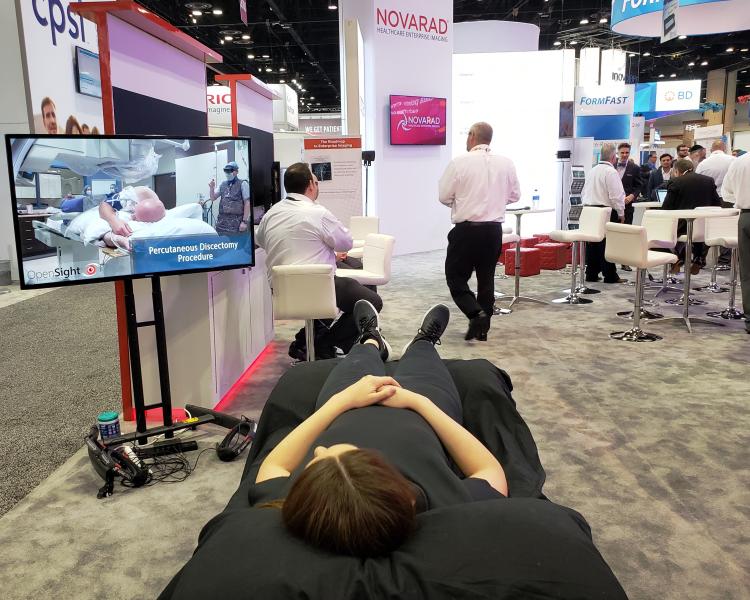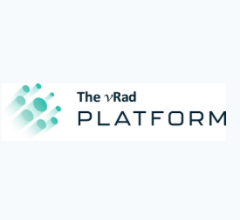
Greg Freiherr has reported on developments in radiology since 1983. He runs the consulting service, The Freiherr Group.
HIMSS 2019 Friday - Exhibitors Echo Need for Collaboration

Novarad promotes data gathering, storage and exchange across the enterprise at HIMSS19. Photo by Greg Freiherr
The value companies place on collaboration was palpable on the floor of the annual meeting of the Healthcare Information and Management Systems Society (HIMSS19), as company executives discussed — and their staffs demonstrated — existing and works-in-progress.
“We are looking at how we collaborate to drive innovation,” said Johann Fernando, chief operating officer of Fujifilm Medical Systems USA. “We are about understanding the needs of our customers and patients and developing real products that are useful for delivering better clinical outcomes.”
Collaboration is becoming all the more important with the expansion from picture archive and communication systems (PACS) to enterprise imaging. Novarad exemplified this expansion with its Ncompass, which reflects the market turn from siloed PACS toward enterprise imaging.
“We have created a central repository that allows us to store and use multiple objects (clinical data such as images) in the diagnosis or the patient care continuum,” said Harold Welch, Novarad vice president of technical Solutions Worldwide. “It’s not just radiology anymore; not just cardiology, but labs, oncology — all the things that traditionally were siloed out to other systems and inconvenient, if not even unattainable, during the diagnostic procedure.”
With many installed PAC systems nearing the ends of their lifetimes, archives and software that provide the basis for enterprise imaging are coming into vogue. Understanding the needs of this expanding customer base is essential for IT companies.
Carestream Health has long recognized how this might play out, developing and upgrading its Clinical Collaboration Platform as a way to offer flexibility to the provider. The platform’s capabilities, such as worklist development, scheduling and order management, can be “switched on” if and when those capabilities are needed, said Yael Pe’er, Carestream product use manager for enterprise imaging.
“You can start with one thing and just add more functions as you go,” Pe’er said. “You pay for the basic infrastructure and the functions that you want right now. And you can always add more.”
At HIMSS19, GE Healthcare showed how artificial intelligence might play a role in this evolving future, demonstrating a prototypic program (as yet not cleared by the FDA), called “Virtual Collaborator.” Smart algorithms are being tasked with answering the “why” behind providers’ questions.
The reasons behind requests for a patient’s blood pressure, for example, may differ substantially depending on the clinical scenario. One may involve a trauma patient; the other a patient with a history of congestive heart failure symptoms who is visiting a physician’s office for a routine check-up.
“We are applying AI to understand the intent of the caregiver,” said Paul Mullen, general manager for acute care at GE Healthcare.
The AI-enabled software is evolving through a partnership with Roche Diagnostics, a division of Hoffmann-La Roche widely recognized for its in vitro expertise. The development of this software illustrates how the needs of users may differ — and how artificial intelligence might be leveraged to consider those differing needs. It also demonstrates how large companies such as GE Healthcare and Roche Diagnostics might collaborate.
Related content:
itnTV “Conversations:” Fujifilm on Providing Imaging Solutions for the Entire Continuum of Care
Novarad: Giving Enterprise Imaging a New Dimension
Carestream Demonstrates New Clinical Collaboration Platform Capabilities at SIIM
GE Healthcare and Roche Developing Integrated Digital Oncology Diagnostics Platform


 December 09, 2025
December 09, 2025 









